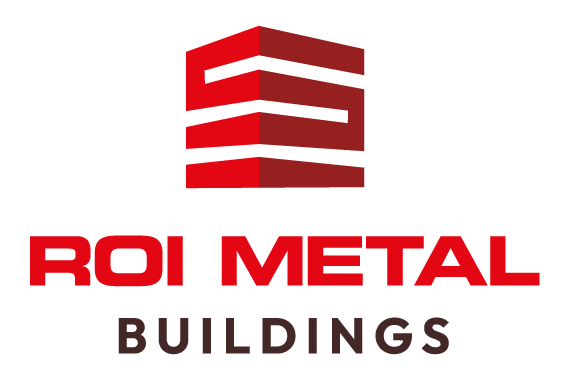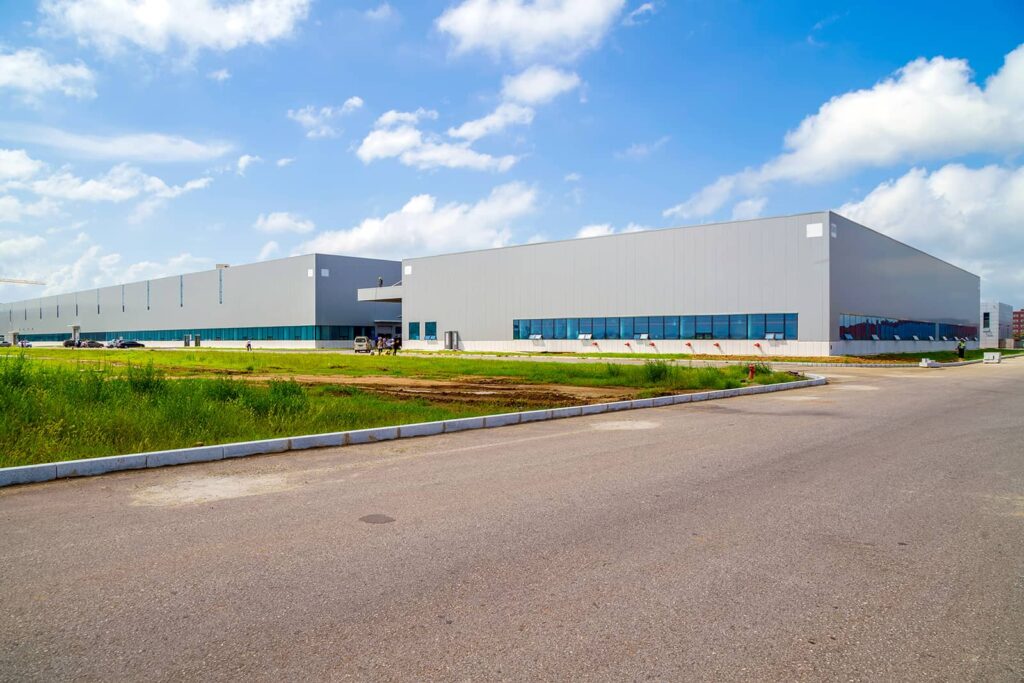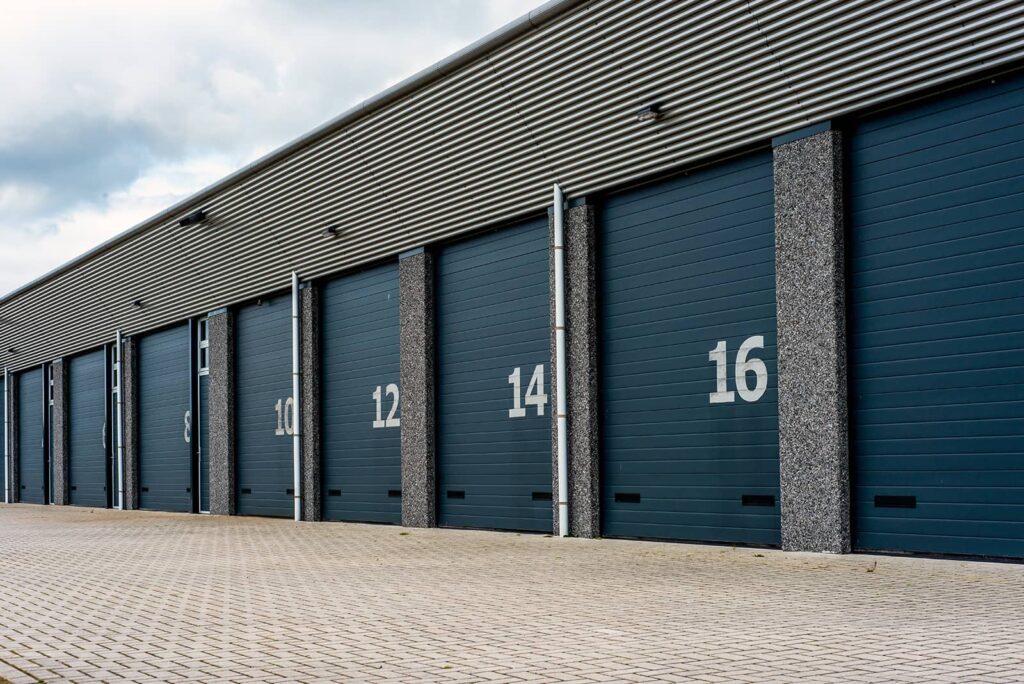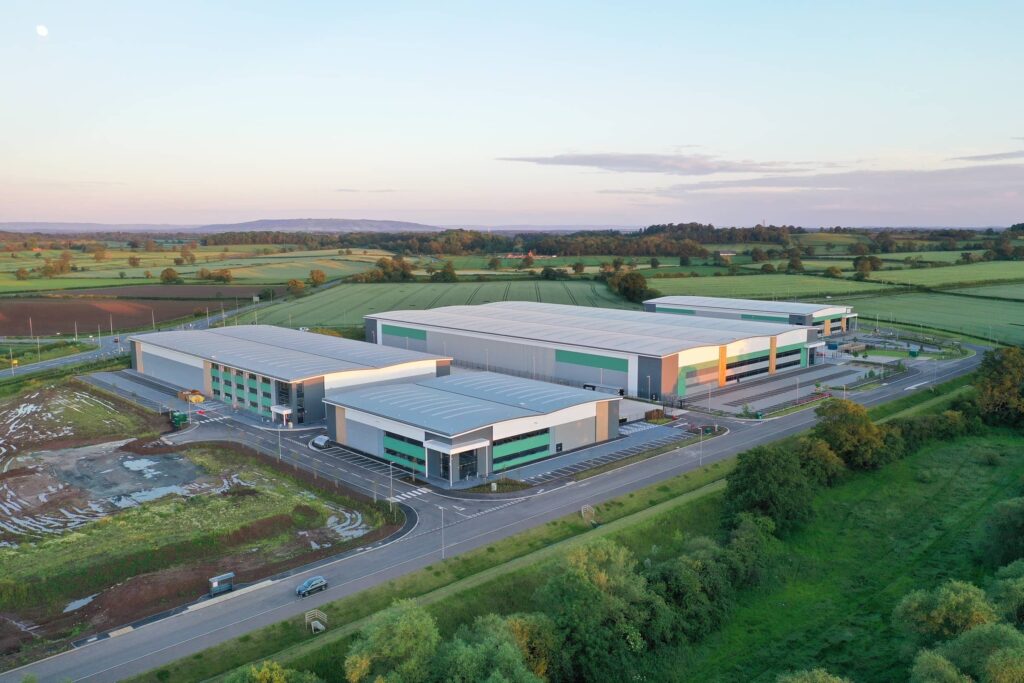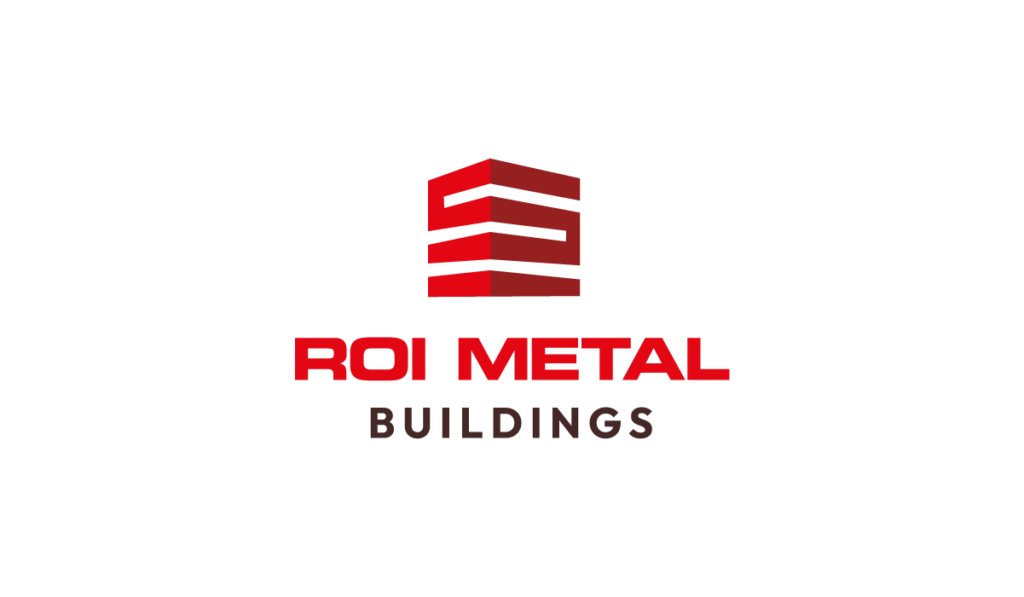Metal buildings and pole barns differ significantly in their construction techniques, materials employed, design options, cost factors and appropriate uses. While both structures have their core features, metal buildings tend to be more durable and adaptable due to their steel makeup; they also provide greater freedom in terms of design customization. On the other hand, pole barns often require less capital outlay upfront, making them an attractive choice for budget-conscious builders. Perhaps less known is that metal buildings can often be quicker to erect owing to their factory-produced components. If you’re diving into these differences between metal buildings vs pole barns our goal is that this article will help you make an informed decision on your building needs.
When comparing metal buildings to pole barns, it’s essential to consider construction methods, durability, maintenance requirements, cost-effectiveness, and suitability for specific purposes. Metal buildings offer robust steel framing, durability, weather resistance, and potential long-term savings, while pole barns provide a traditional aesthetic, economical construction, and flexibility for agricultural use. Each option has its advantages based on the project’s requirements and budget.
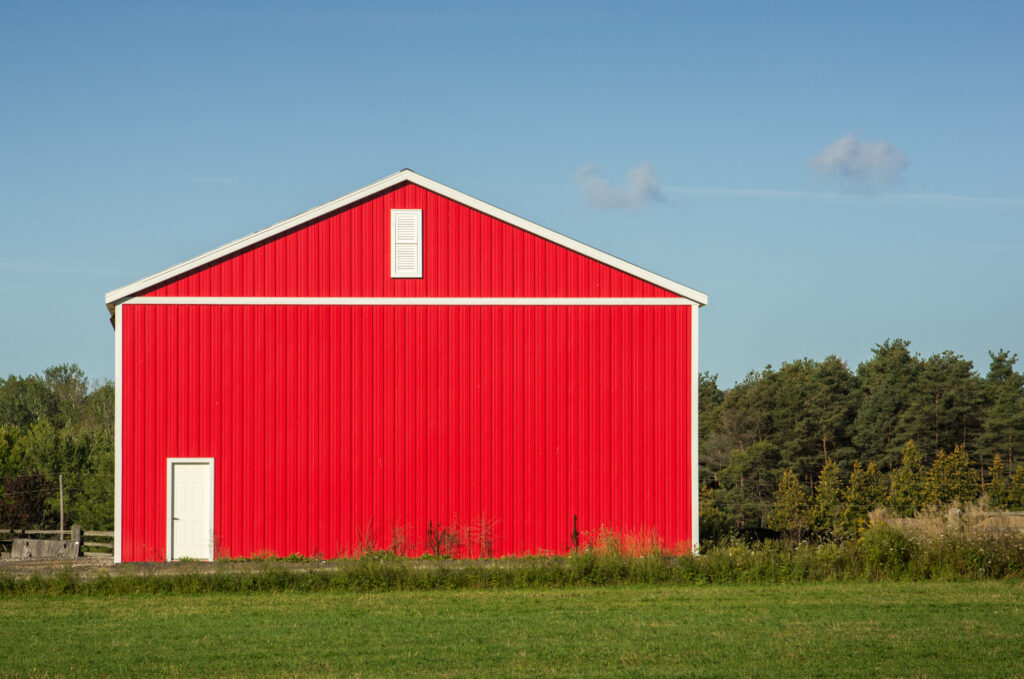
Comparing Metal Buildings and Pole Barns
When deciding between metal buildings and pole barns, several key factors come into play, starting with the construction materials.
Construction Materials: Metal buildings are constructed using solid steel frames bolted together on-site, providing strength, durability, and resistance to harsh environmental conditions. Conversely, pole barns are typically built using wooden poles nailed and screwed together, offering a more traditional aesthetic but potentially lacking the same structural integrity as metal buildings.
Cost: While metal buildings have a higher initial cost than pole barns, investing approximately 15% more in a steel structure can result in long-term savings through reduced maintenance expenses and lower insurance premiums of 30% or more. Additionally, the average cost per square foot for metal building construction typically ranges from $15 to $30, while pole barn construction costs about $12 to $23 per square foot for a kit package.
Design Variations and Customization: Metal buildings offer extensive design options and customization opportunities, from choosing different colors for the exterior walls to adding architectural features. On the other hand, pole barns also offer some degree of customization but may not provide the same level of flexibility as metal buildings.
Purpose: Understanding the specific purpose of your building is crucial when making this decision. Metal buildings are commonly used for commercial, industrial, agricultural, and residential purposes due to their durability, extreme weather resistance, and potential for reduced insurance premiums. In contrast, pole barns are popular among farmers and ranchers in the United States for small to medium-sized agricultural storage needs due to their economic construction and suitability for certain applications.
In summary, evaluating these factors against your specific needs and budget considerations is essential for making an informed decision when choosing between metal buildings and pole barns. Each option offers distinct features and benefits that cater to different use cases, so it’s important to carefully assess what aligns best with your requirements and long-term goals.
Encompassing a myriad of materials and techniques that shape the very foundations of these structures, exploring construction methods offers a deeper understanding of their attributes. Let’s embark on this journey by delving into
Construction Materials and Techniques.
Construction Materials and Techniques
When considering material choices, metal buildings and pole barns are fundamentally different. Metal buildings are constructed using solid steel frames that are bolted together on-site, leading to an incredibly sturdy structure. These steel frames provide exceptional strength and durability, essential for withstanding extreme weather conditions. The bolts that hold the steel frames together allow for easy assembly and disassembly, facilitating convenient modifications and expansions in the future, if necessary.
On the other hand, pole barns are built using wooden poles that are usually screwed and nailed together. This traditional construction method has its advantages in terms of cost-effectiveness, especially for smaller farms and ranches. The wooden frame gives off a rustic aesthetic that some may find appealing. However, while wooden structures offer a certain charm, they necessitate regular maintenance and may not have the same longevity as their metal counterparts.
Metal Buildings Construction Techniques
Construction techniques for metal buildings involve pre-engineered components, designed to fit together seamlessly, enabling quicker construction times. Bolted connections or welding methods are used to join steel components on-site, ensuring that each part fits precisely into place. Additionally, engineered mainframes form the structural backbone of metal buildings, providing stability and reliability.
Pole Barns Construction Techniques
In contrast, pole barns rely on post-frame construction methods, utilizing vertical wood posts secured into the ground to support the roof trusses. Sliding doors are a common feature in pole barns due to their versatility in larger openings. However, while this method offers flexibility for end-wall expansion, it may present limitations in terms of width compared to metal buildings.
Imagine constructing a shelter for your farming equipment or livestock using a metal building versus a pole barn. The metal building can offer greater protection against severe weather conditions such as high winds or heavy snow loads due to its robust steel frame. On the other hand, the rustic appeal of a pole barn might suit a smaller-scale operation with its economical construction technique.
Whether it’s the robustness of steel or the timeless charm of wood, understanding these materials’ distinct properties and construction techniques is essential when deciding between metal buildings and pole barns for your specific needs. Each method has its own strengths and considerations that should be weighed carefully against your intended purpose and budget.
As we transition to explore cost and value for money in building construction options, it’s crucial to consider not just the upfront costs but also the long-term benefits of these investment choices.
Cost and Value for Money
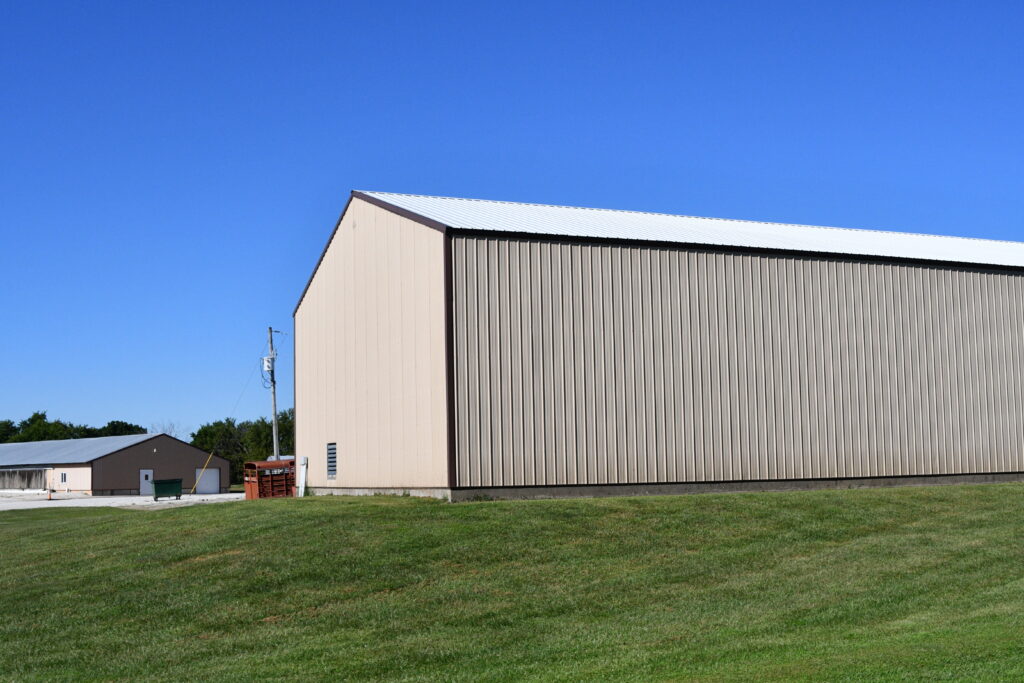
When making a decision between two types of structures, the cost is often a pivotal factor. On an initial purchase basis, metal buildings generally have a higher upfront cost compared to pole barns due to the steel frames used in their construction. However, before opting for the lower upfront cost of pole barns, it’s important to consider long-term savings and benefits.
Investing approximately 15% more in a steel structure can lead to substantial long-term savings. Metal buildings, backed by their sturdy steel frames, tend to incur reduced maintenance expenses over time. They also often qualify for significantly lower insurance premiums, sometimes up to 30% or more. While it might seem like a greater investment at the outset, this additional cost can translate into substantial financial benefits over the lifespan of the building.
It’s crucial to view this from a financial perspective – while choosing a pole barn may seem economically advantageous initially, the potential recurring expenses and higher insurance costs associated with it could counteract those initial savings. This is an important consideration for anyone looking for a cost-effective solution in the long run.
In addition to lower long-term operational costs, metal buildings offer remarkable long-term value. Many metal building manufacturers provide warranties that extend up to an impressive 40 years. This reflects not only the durability of metal buildings but also their minimal maintenance requirements over extended periods.
Imagine having the peace of mind knowing that your metal building is protected by such an extensive warranty, endorsing its ability to withstand wear and tear over several decades without compromising its structural integrity. This assurance not only adds value to your investment but also provides security against potential repair or replacement costs in the future.
By intricately understanding the cost-to-value ratio and the long-term benefits of metal buildings over traditional pole barns, you can make an informed decision that caters to your immediate budgetary constraints while securing lasting advantages in terms of durability, maintenance, and financial savings.
Moving on from understanding the financial aspects of construction methods, let’s now shift our focus to explore the diverse variations in structure and design.
Structure and Design Variations
Metal Buildings: When it comes to metal buildings, the options are vast. You can find a variety of design configurations and structural options tailored to meet distinct requirements, whether it’s for commercial, industrial, agricultural, or residential purposes. Metal buildings offer the flexibility to be customized to fit your unique needs. They can also be easily expanded or modified in the future, making them a versatile and long-term solution.
Metal buildings can be configured with different door placements, have modules called bays, and use an engineered mainframe to provide structural stability. Their design options aren’t just about looks – they also cater to functionality and adaptability.
Pole Barns: On the other hand, pole barns are more traditional in their aesthetic appeal. They exude a rustic charm that adds character to the environment. They are frequently used for small to medium-sized agricultural buildings like storage sheds or workshops. However, it’s important to note that due to the construction method using roof trusses, pole barns may have limited interior clearances.
This limitation in interior clearances can be a crucial factor when considering the intended use of the building. For instance, if you’re planning on using the space for large equipment or machinery that requires ample headroom, this aspect needs careful consideration.
Both metal buildings and pole barns offer unique pros and cons; understanding how these structural and design variations impact their overall suitability for specific requirements is essential in making an informed decision about which type of structure is best suited for your needs.
As we continue our exploration into maximizing the potential of your structure, let’s shift our focus to understanding the significance of customization and purpose in creating the ideal space for your needs.
Customization and Purpose
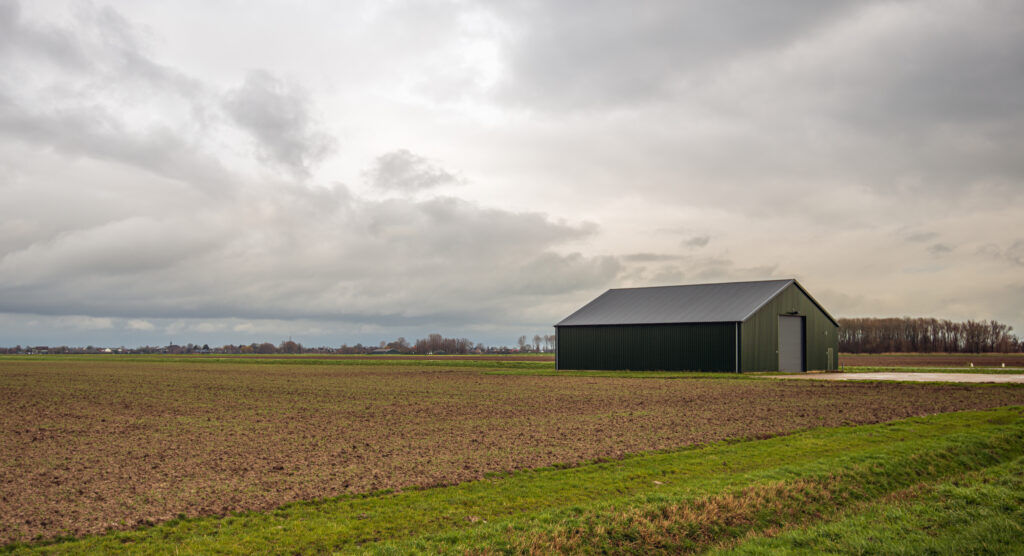
When it comes to customizing a building’s design and purpose, metal buildings offer a wide array of possibilities. Whether you need a spacious garage, a durable warehouse, or a commercial space, metal buildings can be tailored to your specific requirements. The use of solid steel frames allows for greater flexibility in design, making it easier to create large open spaces without the need for support columns. This lends itself well to various applications, including manufacturing facilities, retail stores, aircraft hangars, and storage warehouses.
Furthermore, the versatility of metal buildings extends to their modification and expansion capabilities. As businesses grow and evolve, so too can the infrastructure needed to support them. Metal buildings are designed to be easily modified, allowing for changes in layout as well as expanded floor space. This adaptability makes them an ideal choice for organizations looking to future-proof their infrastructure and accommodate potential growth.
For instance, a company may start with a 10,000 square foot metal building for production activities but may need to expand to 20,000 square feet due to increased demand. With the inherent flexibility of metal buildings, expanding the existing structure is relatively straightforward compared to traditional construction methods.
Pole Barns: Asset for Small Farms
On the other hand, if you’re managing a small farm or ranch and need additional storage space or shelter for livestock, pole barns are an attractive option. Pole barns are specifically tailored for agricultural use, offering an economical and simple solution for storing equipment, hay, or other agricultural products. Their construction method allows for quick and cost-effective assembly, making them particularly suitable for smaller operations with budget constraints.
To illustrate further, think of pole barns as the practical workhorses on farms – serving as protective shelters for various farming essentials while requiring minimal maintenance and low initial investment.
In summary, metal buildings provide unparalleled flexibility and adaptability to accommodate diverse industries and future expansion needs. On the other hand, pole barns offer an economical solution perfectly suited for smaller-scale agricultural operations that require additional storage or housing options. Understanding the distinct capabilities of each provides valuable insight when considering the best fit for your specific needs.
The comparison between metal buildings and pole barns exposes the unique advantages each construction method offers. Now let’s examine how these variations influence the final decision when choosing between them.
Final Verdict: Metal Buildings vs Pole Barns
By now, you have gained insight into the unique benefits and features offered by each construction method. Metal buildings are renowned for their rugged durability, low maintenance requirements, ability to withstand extreme weather conditions, and potential cost savings on insurance premiums. Conversely, pole barns appeal to those seeking a more budget-friendly and traditional construction approach, particularly suitable for small farms and ranches. It’s clear that each option has its own set of advantages catering to different needs.
If you prioritize a structure that requires minimal maintenance, offers superior durability, and is built to withstand harsh climatic conditions, a metal building might be the more suitable choice for you. The initial investment in a steel structure may be higher than that of a pole barn, but this extra cost can result in long-term savings through reduced upkeep expenses and lower insurance premiums. Moreover, metal buildings come with warranties of up to 40 years, providing added peace of mind and long-term financial benefits.
On the other hand, if you’re looking for an economical and quick construction solution with a traditional rustic aesthetic, then a pole barn may better align with your needs. The affordability and ease of construction make pole barns an attractive choice for small farms or ranches requiring additional storage space. However, it’s important to note that while they may have a lower initial build cost for smaller buildings and offer expandability through end walls, they require regular maintenance over time, including painting and replacing damaged wood.
When making your decision, consider your specific needs, budget constraints, long-term considerations, and any local building code requirements that may influence your choice between metal buildings and pole barns. Remember that while the initial cost of a metal building may be higher for smaller structures, the long-term benefits in terms of reduced maintenance costs, extended lifespan, and potential savings on insurance premiums can offer a compelling case for choosing this construction type.
We encourage you to reach out for personalized guidance in making an informed decision between metal buildings and pole barns based on your specific needs and preferences. In conclusion, both metal buildings and pole barns have their distinct advantages—weighing these against your specific requirements will lead you to select the most suitable option for your construction project. Considering metal buildings or pole barns? Contact us online or call us at 865-316-9009 for expert advice tailored to your needs!
